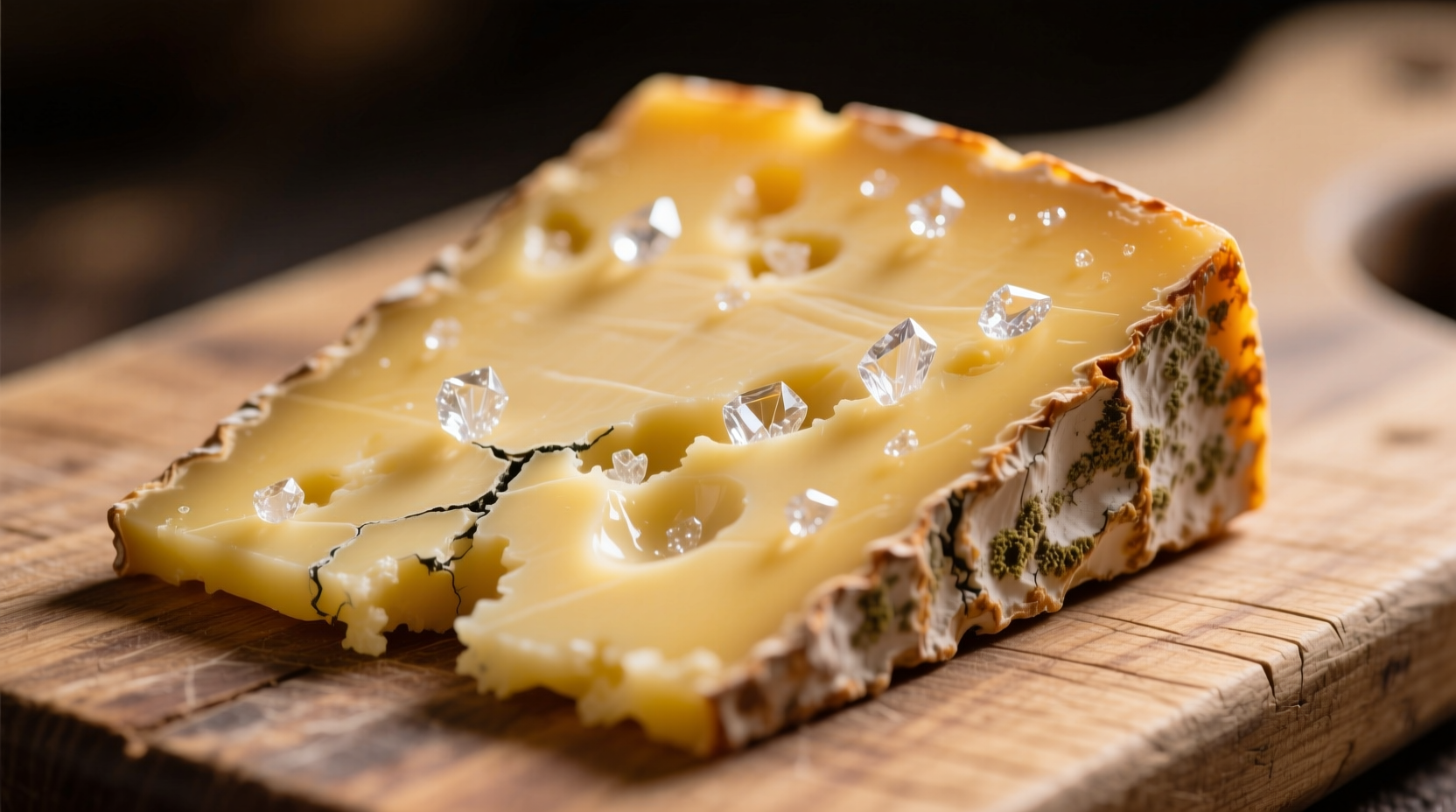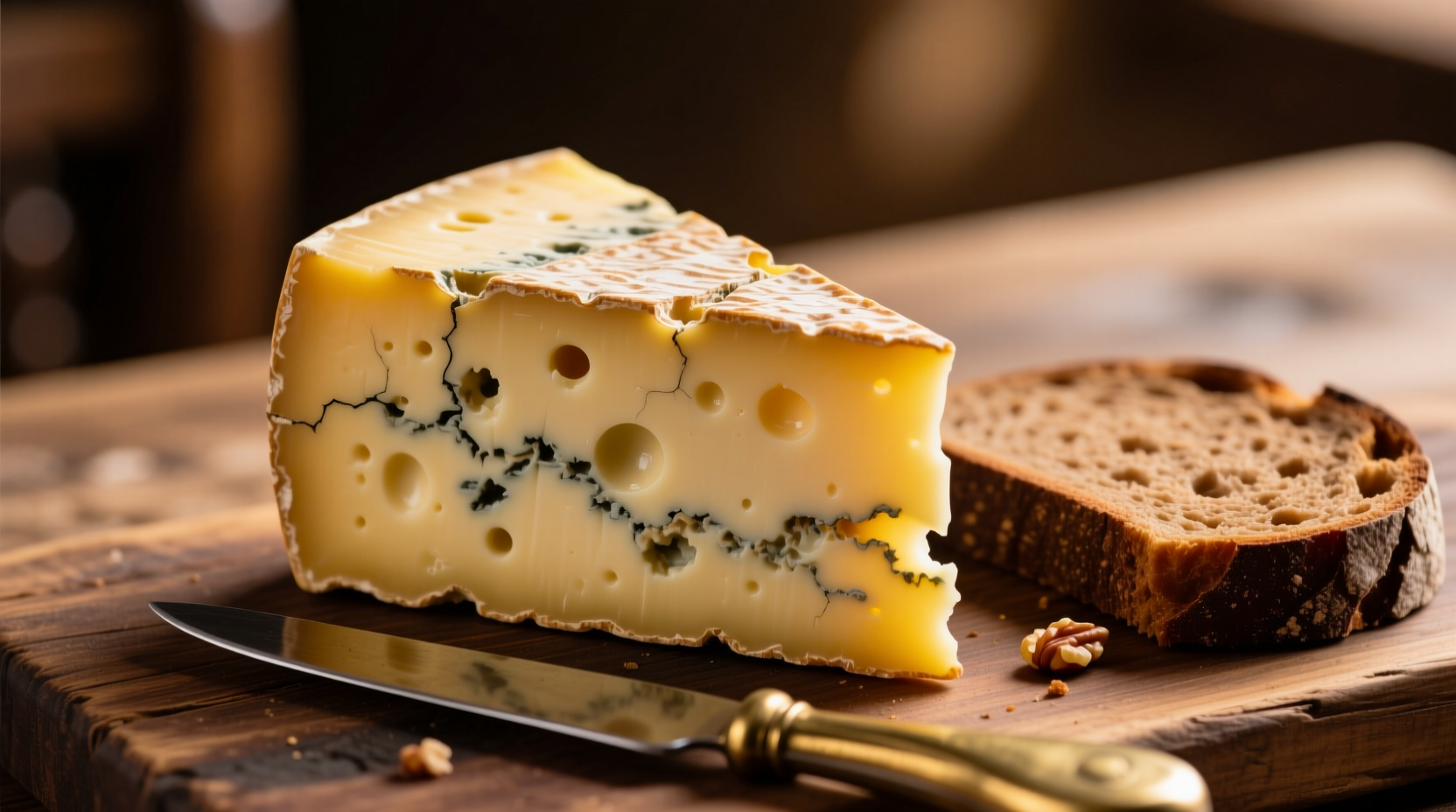Decoding Gruyère's Distinctive Flavor Journey
When you take your first bite of authentic Swiss Gruyère PDO cheese, you're experiencing a flavor evolution shaped by centuries of traditional cheesemaking. This renowned Alpine cheese begins with a smooth, buttery texture that coats your palate with initial notes of fresh milk and cream. Within seconds, the signature nuttiness emerges—think toasted hazelnuts and brown butter—with a subtle sweetness reminiscent of butterscotch. The finish reveals why Gruyère stands apart: a pleasant tang balanced by earthy, mushroom-like undertones and a gentle saltiness that enhances rather than dominates.
How Aging Transforms Gruyère's Taste Profile
The magic of Gruyère happens during its mandatory aging process. Unlike mass-produced "Swiss" cheese found globally, authentic Gruyère PDO must age a minimum of five months in carefully controlled cellars. This timeline reveals how time transforms its flavor:
| Aging Period | Flavor Characteristics | Texture Changes |
|---|---|---|
| 5-6 months (Classic) | Mild nuttiness, subtle sweetness, gentle saltiness | Semi-firm, smooth, slightly springy |
| 8-10 months (Réserve) | Pronounced caramel notes, deeper nuttiness, complex fruit hints | Firmer with small tyrosine crystals beginning to form |
| 12+ months (Vieux) | Intense savory umami, distinct crystalline crunch, robust earthy notes | Hard, granular with visible protein crystals |
According to the Swiss Cheese Union's sensory analysis guidelines, these crystalline formations—tiny amino acid clusters—are crucial markers of proper aging and directly contribute to Gruyère's complex flavor release. The European Food Safety Authority confirms these crystals enhance flavor perception by creating micro-releases of savory compounds as the cheese melts in your mouth (Swissmilk.ch).
What Makes Authentic Gruyère Different From Imitations
Many consumers confuse generic "Swiss cheese" with authentic Gruyère PDO, but the differences are significant. True Gruyère comes exclusively from Switzerland's Fribourg, Vaud, Neuchâtel, Jura, and Bern regions, where cheesemakers follow strict production protocols established in 1115 AD. The terroir—the unique combination of Alpine grasses, mineral-rich soil, and traditional copper vats—creates flavor compounds impossible to replicate elsewhere.

Food scientists at Agroscope, Switzerland's federal agricultural research center, have identified over 150 volatile compounds in authentic Gruyère that contribute to its distinctive profile (Agroscope.ch). These include key molecules like diacetyl (buttery notes), sotolon (caramel/nutty character), and various free amino acids that create the savory umami finish. Mass-produced alternatives lack this chemical complexity due to accelerated aging and different bacterial cultures.
Context Matters: When Gruyère's Flavor Shines Best
Gruyère's versatility makes it valuable in countless applications, but its flavor profile performs best in specific contexts:
- Cooking applications: Melts beautifully without separating due to its balanced fat-protein structure—ideal for French onion soup, fondue, and gratins where its nuttiness enhances rather than competes with other ingredients
- Cheese boards: Pairs exceptionally with dried fruits (apricots, figs), crusty bread, and medium-bodied red wines that complement rather than overwhelm its nuanced flavors
- Temperature considerations: Serve at 65-70°F (18-21°C) to fully release aromatic compounds—cold temperatures mute its complex flavor development
- Limitations: Avoid pairing with strongly flavored ingredients like blue cheese or spicy chutneys that will dominate Gruyère's delicate balance
How to Properly Taste Gruyère Like a Connoisseur
Maximize your Gruyère tasting experience with this professional method:
- Bring the cheese to room temperature (remove from refrigerator 1 hour before serving)
- Use a stainless steel cheese knife to prevent flavor contamination
- Take a small cube (about 1" square) and place it on your tongue without chewing
- Let it slowly melt while breathing through your nose to capture volatile aromatics
- Notice the flavor progression: initial creaminess → nutty mid-palate → savory finish
- Swallow and observe the lingering aftertaste—authentic aged Gruyère should leave pleasant caramel notes
This technique, recommended by the Swiss Cheese Maturers' Association, allows you to detect subtle flavor nuances that disappear when cheese is hastily consumed. Their sensory evaluation protocols require tasters to document at least three distinct flavor phases to verify authenticity (Cheese-Switzerland.ch).
Recognizing Quality Indicators in Gruyère
When selecting Gruyère, look for these markers of quality:
- Label verification: Authentic Gruyère carries the PDO (Protected Designation of Origin) seal and "Switzerland" designation—avoid products labeled simply "Gruyère" without origin specification
- Visual inspection: Even golden-yellow color (not pale yellow), small irregular holes ("eyes"), and visible crystalline formations in aged varieties
- Aroma test: Should smell sweet and nutty—not sour, ammoniated, or overly pungent
- Texture assessment: Properly aged Gruyère feels dense but not crumbly, with slight springiness when pressed
Remember that Gruyère's flavor continues evolving after purchase. Store it properly in cheese paper (not plastic wrap) in your refrigerator's vegetable drawer, where it will gradually develop more complex flavors for several weeks.
Why Gruyère's Flavor Profile Makes It Culinary Gold
Chefs prize Gruyère for its unique ability to enhance dishes without dominating them. Unlike sharper cheeses that can overwhelm, Gruyère's balanced flavor profile acts as a "flavor amplifier"—its natural glutamates enhance umami in other ingredients while its nuttiness adds depth. This makes it indispensable in classic dishes like quiche Lorraine, croque-monsieur, and traditional Swiss fondue where its melting properties and flavor complexity create harmonious results impossible with substitute cheeses.











 浙公网安备
33010002000092号
浙公网安备
33010002000092号 浙B2-20120091-4
浙B2-20120091-4